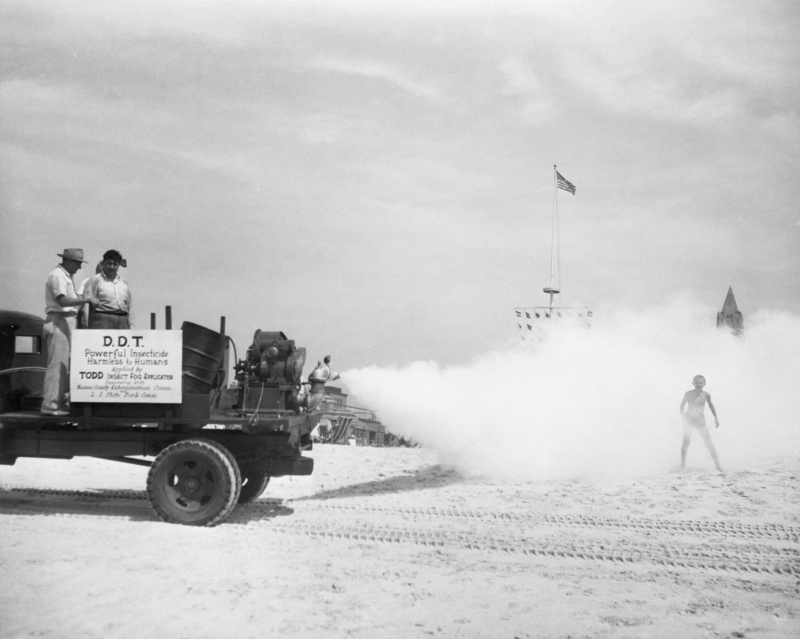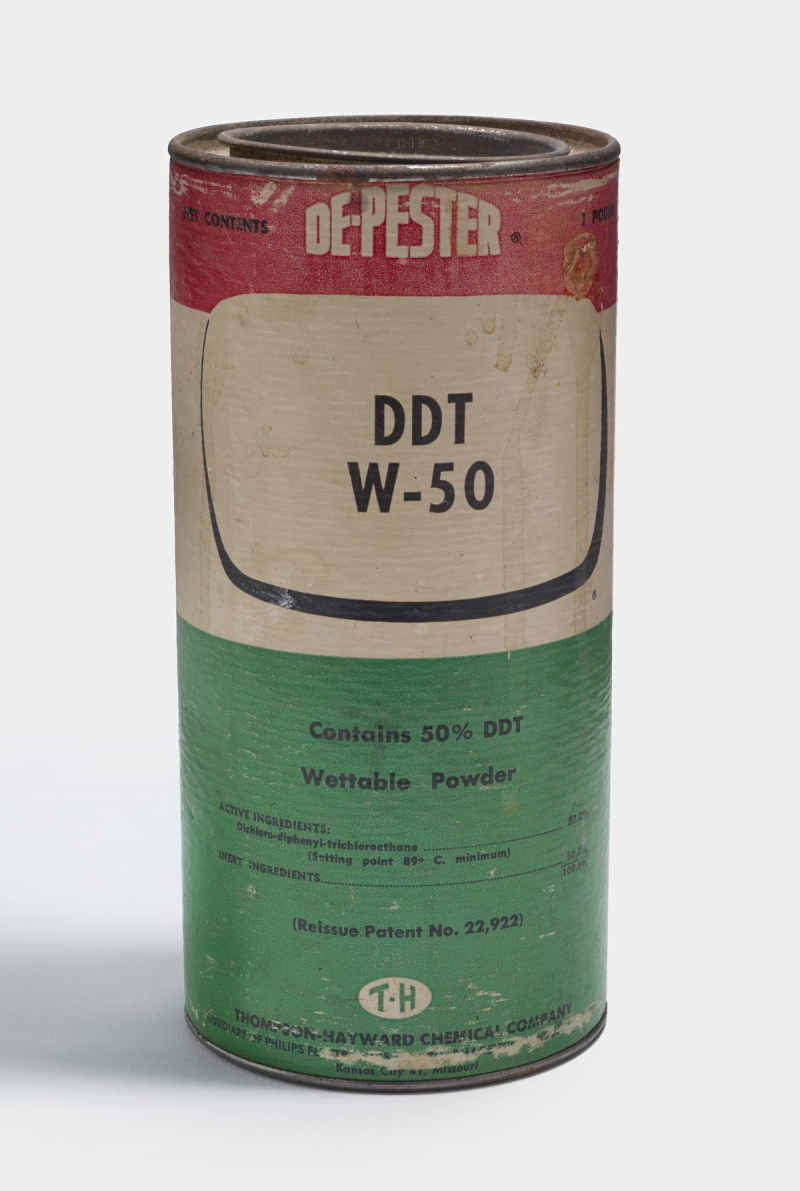DDT
During the second half of World War II, DDT was employed to prevent the spread of the insect-borne illnesses typhus and malaria among both civilians and military personnel. For "discovering the great efficacy of DDT as a contact toxin against many arthropods," Müller received the Nobel Prize in Physiology or Medicine in 1948. It was the first major conflict in which combat-related causes of death were outnumbered by diseases, and one of those causes was the freshly discovered insecticide DDT.
DDT, which was found by Swiss scientist Paul Müller and for which he later received the Nobel Prize, was so successful in killing fleas that carried disease and other insects that field commanders and soldiers frequently referred to it as the "wonder drug." The insecticide was initially used on the Pacific front, where disease-related deaths were highest, and it quickly established itself as a standard component of an Allied soldier's equipment. In 1943–1944, a typhus outbreak that was spreading throughout Naples, Italy, was successfully contained by DDT.












